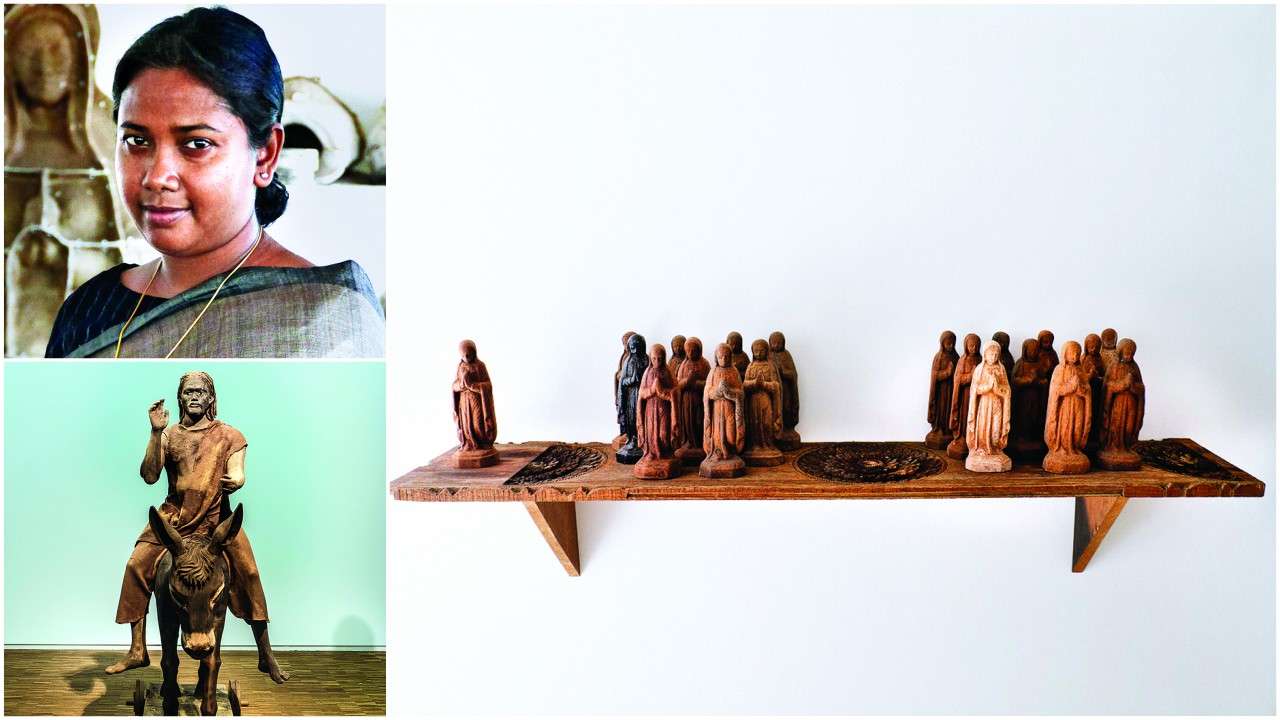
Benitha Perciyal is speaking to a journalist at India Art Fair 2018’s Gallery Veda booth, when a passing spectator steps up to her. “You look like a part of that work,” he says, pointing to the sculpture titled I resist, therefore I exist, prominently displayed near the front. “I saw it and knew you were the artist. I was at your show last year at Nature Morte gallery and saw those works. They are exquisite,” he adds, shaking her hand vigorously.
Perciyal is moved, clearly. “This,” she says “is what keeps you alive, this is what makes you go to another point (artistically), not the price (of artworks).”
The appreciation of an anonymous art lover is one of many honours that have come Perciyal’s way of late – shortly before the art fair, it was announced that she was the recipient of 2018 Asia Arts Game Changers Award India.
She was part of a large show at the Centre Pompidou in Paris on the Indian Contemporary, a six-month show that ended last week. In June, she was at the inaugural Yinchuan Biennale and the year before, the 40-year-old artist won the Amol Vadehra Art Grant.
The plaudits are evidence of how Perciyal, from Chennai, has managed to combine her ‘highly experimental’ practice with a form that remains accessible to the common man – whose tactile quality he enjoys, even if he might not get all the complexities of the intellectual process by which the artist has arrived at it.
For Perciyal uses a very novel material – a combination of natural perfumed materials like frankincense, myrrh, cinnamon, clove, lemongrass and cedar wood mixed together with an organic resin and then ‘cast’ into busts or figures. Earlier, she has worked with seeds, tree resin, found objects, jaggery, books, and embroidery – to name a few. Her recent composite pieces also use wood from a broken down 200-year-old church, and they’ve been shaped into various forms. In I resist, therefore I exist, it’s a bookcase, while in The Triumphal Entry at the Centre Pompidou, it was a horse and cart, a reference to Jesus’s entry into Jerusalem from the Gospel of Matthew.
That’s another recurring characteristic of Perciyal’s artwork – Biblical allusions. “Earlier even my titles were taken from the Bible,” says Perciyal in her slightly halting English. “But why not? I was born and raised a Christian. Religion defines me; it is where I get my values from. When I read the Bible, each word, each sentence talks to me.”
The religious reference is writ also in her choice of frankincense and myrrh, gifts that the Magi bore (there was also gold) when they visited baby Jesus. But more than the novelty of the material, it’s how Perciyal works with them that’s fascinating – the incense ‘dough’ made of frankincense, myrrh, etc., which she casts into figures is very slow to dry and has a tendency to change, disfigure or disintegrate as it does. “It takes months, and you work with your hands. The process is almost meditative.”
In the art world, this preoccupation with process has given Perciyal the reputation of someone who is not very prolific.
“She works at her own pace and only does exhibitions when she has enough work to show,” says a Chennai-based gallerist who has worked with her. “That’s the not-good part of success – the pressure to do more. But I don’t take pressure – I can’t do it, I tell buyers clearly,” she finishes.